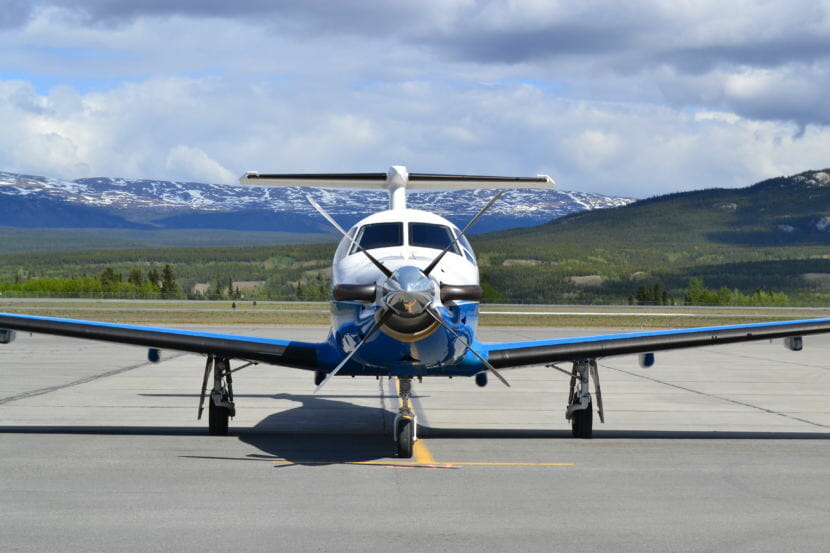
One unpleasant aspect of winter living in the northern Lynn Canal is transportation.
Sometimes the ferry isn’t running. So when Haines residents try to catch a flight to Juneau, they watch the sky expectantly, hoping the cloud cover will lift and allow small planes to land. Sometimes, this can last for days.
Here’s some good news: officials from Alaska Seaplanes say flight cancellations should be drastically reduced this winter. The company has recently rolled out new instrument navigation approaches to a number of Southeast communities, including Haines.
“IFR, so the flight rules under instruments, we are actually allowed to penetrate the clouds and not see anything but still just as safe as we are when we are flying VFR, if not safer,” said Gregg Hake, a pilot with Alaska Seaplanes.
He said there are two ways to pilot a plane. One is Visual Flight Rules, or VFR, which is often how smaller planes are flown. Pilots use their eyes to situate themselves within the landscape. The other is Instrument Flight Rules, or IFR. That’s the high tech way of flying where the instruments do the tracking. The pilot has to trust the technology, and follow a path — also known as an approach — that is recorded in the navigation system.
“If you imagine a tunnel through the sky at different altitudes, and around the terrain, that takes you from whatever altitude the approach starts at, down to the runway essentially, or close to the runway,” Hake said.
IFR is already in use in Southeast Alaska. The Federal Aviation Administration produces public approaches that are valid for all airplanes equipped with IFR systems. Hake said these are broadly used in the Lower 48, and there isn’t much to improve on.
“But it’s places like Southeast Alaska that are just so tricky to operate in and out of and there isn’t the same traffic volume that you would see down south, so the FAA doesn’t commit perhaps the same level of resources to producing more exotic approaches that we need,” he said.
But the FAA also certifies private approaches that are produced by particular operators. These approaches are tailored to a specific airplane’s capacity. This is the upgrade Alaska Seaplanes has recently rolled out.
Pilot Cable Wells has spent the last few years developing approaches for Island Air and its parent company, Alaska Seaplanes. There are many steps to the process.
“Site surveys, terrain surveys, figuring out what is possible to do in the terrain that still meets all the FAA requirements,” Wells said. “And then you have to go out and flight check everything, equip the aircraft with all sorts of sensors, and collate all this data and send it to the FAA for approval process.”
Wells said it takes a couple years to get an approach certified. In April, Alaska Seaplanes introduced new approaches for eight towns across Southeast, including Haines, Juneau, Kake, Klawock, Hoonah, Petersburg, Wrangell and Sitka.
Andy Kline is the marketing director for the company. He explained what the advantages are over the old approaches.
“Once you get to the runway, you have to be able to still see the runway at a certain limit,” Kline said. “But those limits have been lowered based on these new approaches and this new technology. And that’s one of the big reasons why we are able to get in Haines much more often now than we were even just a couple months ago.”
This means the planes can now fly with a lower cloud cover. Previously, if clouds around the Haines airport were lower than 1,700 feet, just low enough to touch the summit of Mount Riley, planes could not fly in. Now that limit is much less, at 940 feet.
Hake, the pilot, said this is a big improvement since the cloud cover around Haines is often around 1,000 feet.
“I think it will prove over time, to be a significant change in our reliability into the community,” Hake said.
Alaska Seaplanes has equipped most of its fleet with IFR. It costs money to train pilots and retrofit a plane with the proper equipment. And of course, producing the approaches was a significant investment. When asked if the company would pass on that cost to its customers, Kline said the improvements should pay for themselves.
“In a lot of ways, the less cancellations we have, the better our economic outlook is,” Kline said. “So we think that its’ going to be basically a hold harmless situation, as far as fare and things like that go, but people will be able to have a higher reliability, we have higher safety.”
Kline said he doesn’t have numbers yet on the reduction in cancellations, but he hears from pilots.
“Every single pilot that flies IFR has stories about ‘the plane in front had to turn around, because he wasn’t on these new approaches, we flew out, and we landed in Haines no problem.’”
There is no IFR approach to Skagway. Hake said it is unlikely to happen there.
“There just aren’t buffers in that tight little canyon, in the Taiya Inlet, that you need to fly safely in the clouds,” he said. “So I don’t know that there will be instrument approaches into Skagway for a very long time. Maybe when you are in an airplane that doesn’t have a pilot, they’ll do that … which could be sooner than you think.”
But he said he expects service to Skagway to also improve since planes can fly on instruments to Haines, then fly on visual the rest of the way if the northern Lynn Canal is clear.